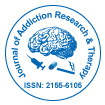Nuestro grupo organiza más de 3000 Series de conferencias Eventos cada año en EE. UU., Europa y América. Asia con el apoyo de 1.000 sociedades científicas más y publica más de 700 Acceso abierto Revistas que contienen más de 50.000 personalidades eminentes, científicos de renombre como miembros del consejo editorial.
Revistas de acceso abierto que ganan más lectores y citas
700 revistas y 15 000 000 de lectores Cada revista obtiene más de 25 000 lectores
Indexado en
- Índice de fuentes CAS (CASSI)
- Índice Copérnico
- Google Académico
- sherpa romeo
- Abrir puerta J
- Revista GenámicaBuscar
- Claves Académicas
- TOC de revistas
- SeguridadIluminado
- Infraestructura Nacional del Conocimiento de China (CNKI)
- Biblioteca de revistas electrónicas
- Búsqueda de referencia
- Universidad Hamdard
- EBSCO AZ
- OCLC-WorldCat
- Catálogo en línea SWB
- Biblioteca Virtual de Biología (vifabio)
- publones
- Fundación de Ginebra para la educación y la investigación médicas
- Pub Europeo
- ICMJE
Enlaces útiles
Revistas de acceso abierto
Comparte esta página
Abstracto
Unraveling the Complexities of Addiction Neuroscience: A Journey into the Brain's Reward Circuitry
Hassan Park, Smith Jones
The field of addiction neuroscience has made significant strides in unraveling the intricate workings of the brain's reward circuitry and its role in addictive behaviors. At the heart of this research lies the dopamine-driven reward system, where pleasurable experiences trigger a surge of dopamine, reinforcing behaviors crucial for survival. In addition, substances and behaviors hijack this circuitry, leading to abnormal dopamine surges and desensitization of the reward system. This article explores the impact of neuroplasticity on addiction, where prolonged exposure to addictive stimuli can result in long-term changes in the brain's structure and function. The interplay between genetics and the environment is also discussed, highlighting their contributions to addiction vulnerability. By understanding addiction neuroscience, researchers have developed promising treatment strategies, including behavioral therapies and pharmacological interventions, aiming to restore balance to the reward circuitry. The future of addiction neuroscience holds exciting potential, with emerging technologies and personalized medicine approaches offering hope for more targeted and effective treatments. Ultimately, this understanding provides crucial insights into addressing the challenges posed by addiction and improving the lives of those affected.
Revistas por tema
- Agricultura y acuicultura
- Alimentación y Nutrición
- Bioinformática y biología de sistemas
- Bioquímica
- Ciencia de los Materiales
- Ciencia general
- Ciencias Ambientales
- Ciencias Clínicas
- Ciencias farmacéuticas
- Ciencias Médicas
- Ciencias Sociales y Políticas
- Ciencias Veterinarias
- Enfermería y atención sanitaria
- Física
- Genética y biología molecular
- Geología y Ciencias de la Tierra
- Ingeniería
- Inmunología y Microbiología
- Química
Revistas clínicas y médicas
- Anestesiología
- Biología Molecular
- Cardiología
- Cirugía
- Cuidado de la salud
- Dermatología
- Diabetes y Endocrinología
- Enfermedades infecciosas
- Enfermería
- Gastroenterología
- Genética
- Inmunología
- Investigación clínica
- Medicamento
- Microbiología
- Neurología
- Odontología
- Oftalmología
- Oncología
- Pediatría
- Toxicología

 English
English  Chinese
Chinese  Russian
Russian  German
German  French
French  Japanese
Japanese  Portuguese
Portuguese  Hindi
Hindi